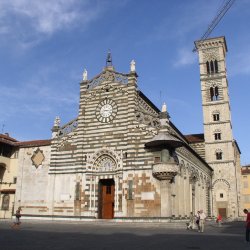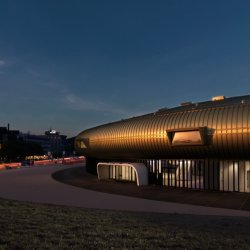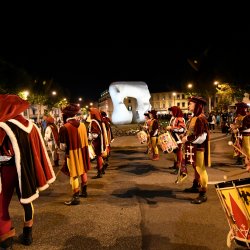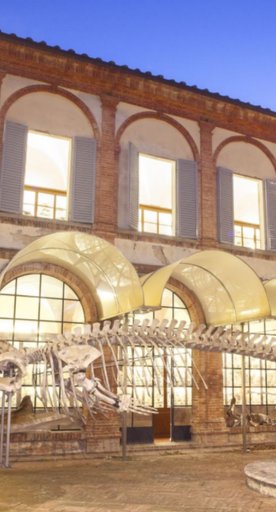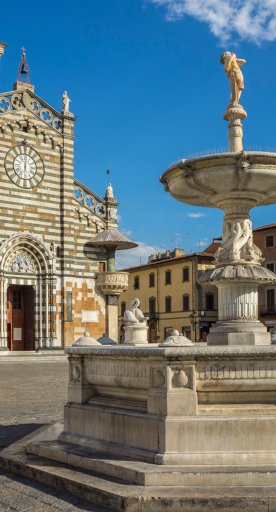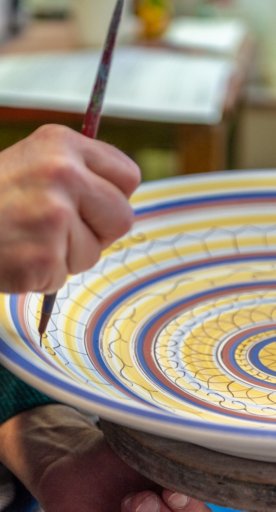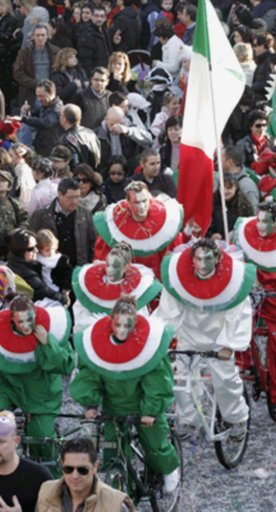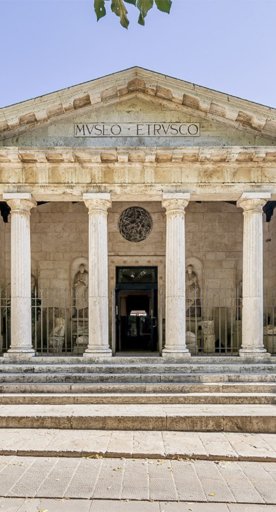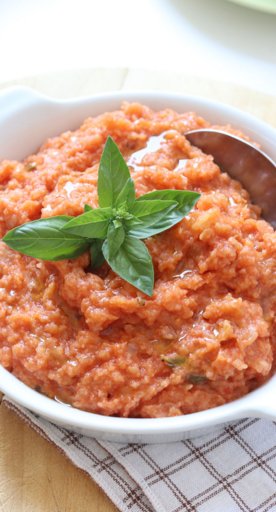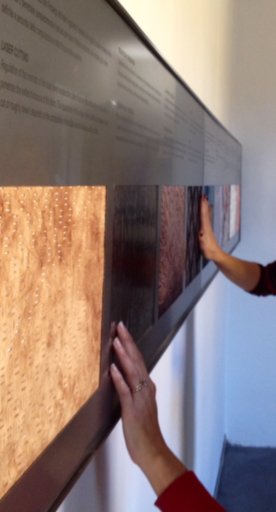

10 things to do in Prato
A city to see, discover and enjoy
If you are looking for a place where tradition and the avant-garde go hand in hand, Prato is the city for you.
A multifaceted place where the ancient art of textiles marries wonderfully with ancient monuments and contemporary art.
Prato stands out for its great manufacturing vocation without leaving behind a rich cultural offering.
Here is an itinerary with 10 ideas to admire, experience and taste!
-
1.Piazza Duomo
-
2.Cathedral of Saint Stephen
-
3.Civic Museum of Praetorian Palace
-
4.Emperor’s Castle
-
5.Basilica of Santa Maria delle Carceri
-
6.Datini Palace
-
7.Piazza Mercatale
-
8.Luigi Pecci Center for Contemporary Art
-
9.Textile Museum
-
10.Typical products
Piazza Duomo
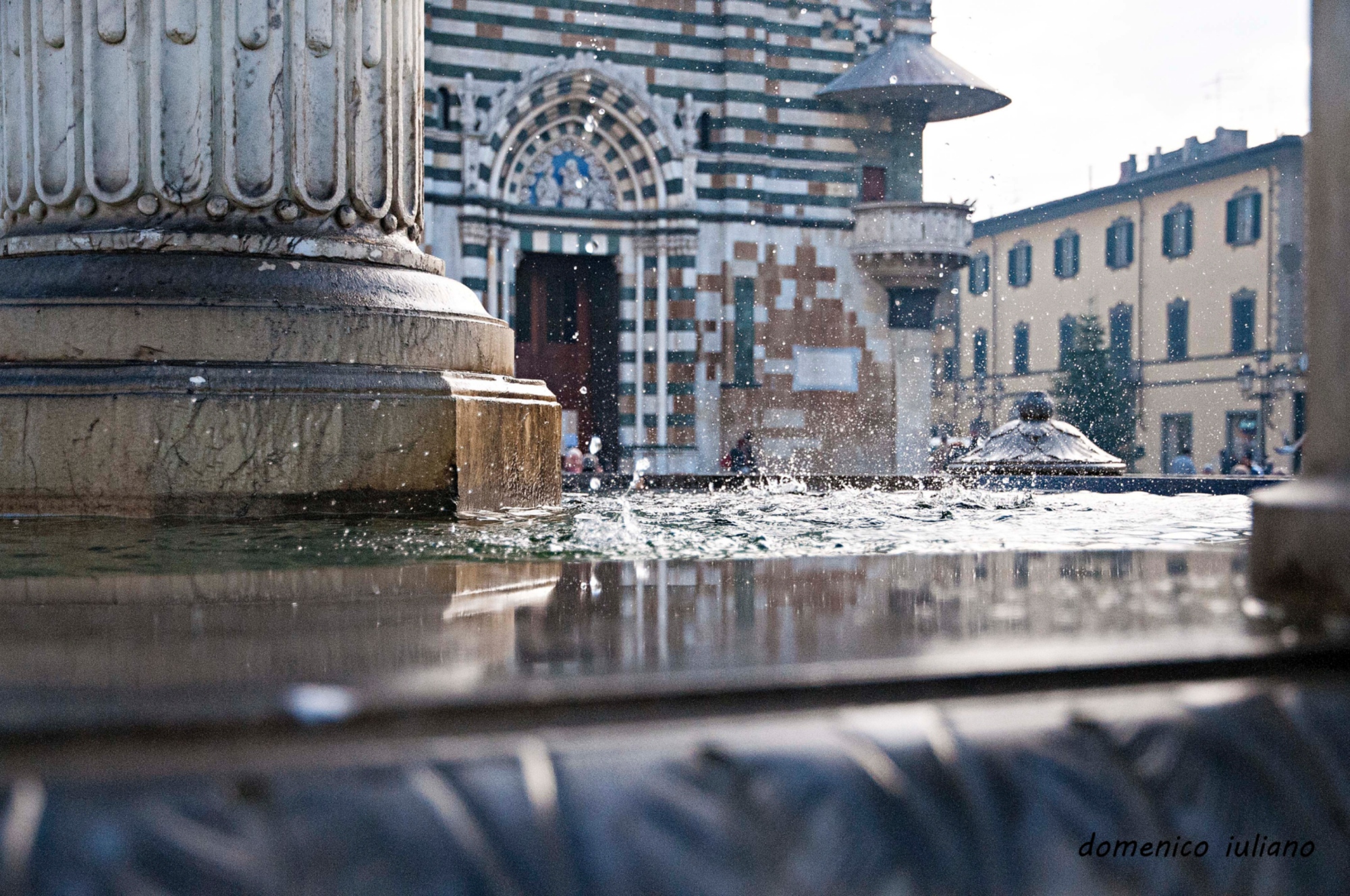
In the heart of Prato's historic center, Piazza Duomo represents the oldest core of the city, which developed right here from the early Middle Ages with the presence of a small village of probable Lombard origin and the parish church, named after St. Stephen.
Later, the square expanded and with it also the parish church until it became a cathedral.
Since the 14th century, in fact, the square was the scene of events, markets, open-air games and, above all, the display of the Holy Girdle - a green-colored belt, woven with gold threads, probably belonging to the Virgin Mary - the city's most important relic.
The Piazza Duomo is overlooked by buildings largely dating back to the 14th century and, of course, the beautiful Cathedral.
Cathedral of Saint Stephen
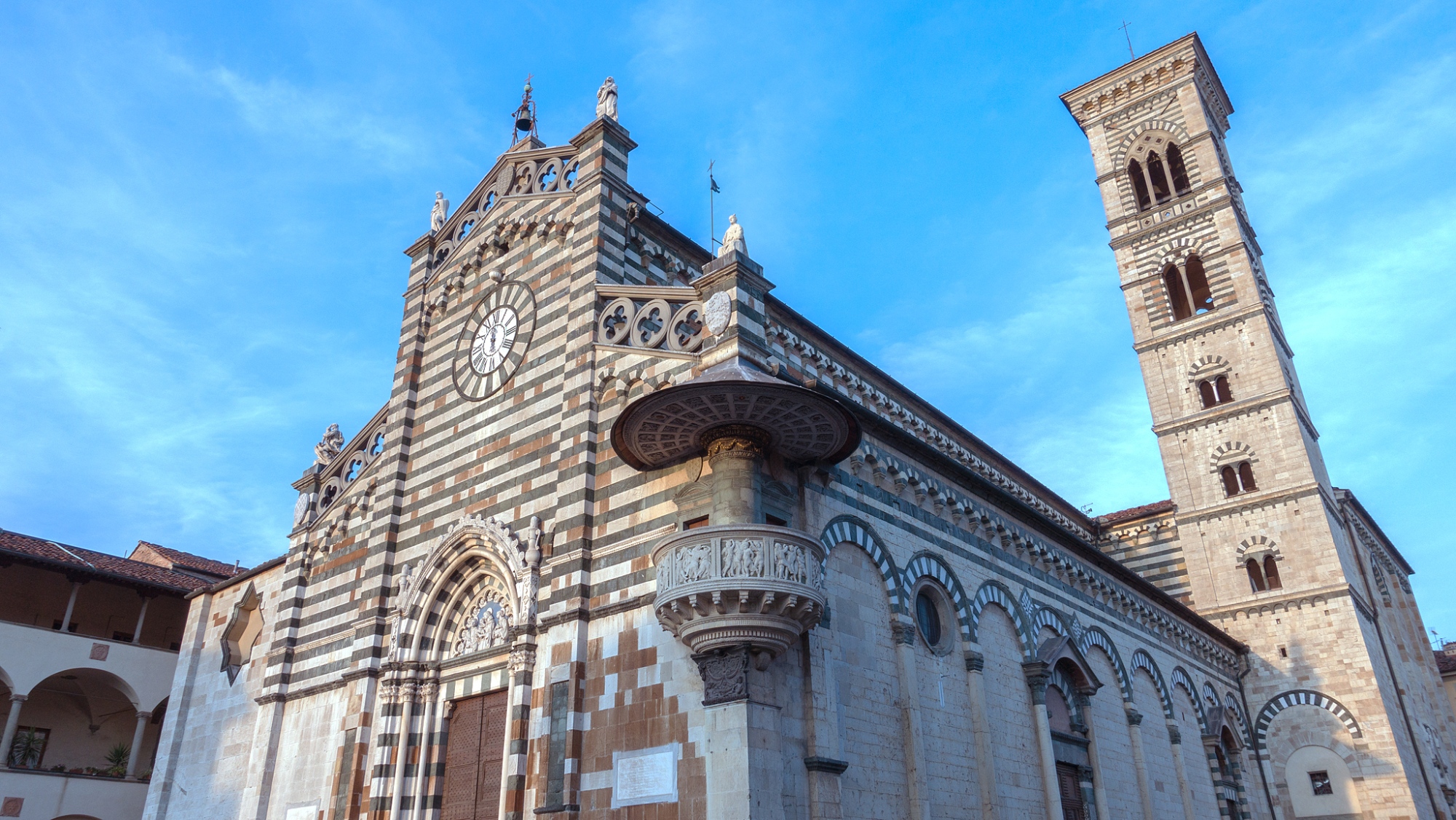
St. Stephen's Cathedral is truly awe-inspiring: the first glimpse falls on the two-tone decorative stripes of the façade, due to the use of two types of marble; next we can admire the external pulpit - the work of Donatello and Michelozzo - and the bell tower.
The first document testifying to the existence of the religious building is from 994; the bell tower, designed by Guidetto, was built in the 13th century; and in the 14th century the Chapel of the Sacred Girdle was built, which preserves the relic that Our Lady gave to St. Thomas at the time of her Assumption into heaven.
In 1386 the construction of the present façade was begun, superimposed on the older one, leaving a gap between the two so as to make a corridor for access to the external pulpit.
Notable works include the wooden Crucifix by Giovanni Pisano, and the large transept, which contains some very important fresco cycles, including Stories of the Virgin and St. Stephen by Paolo Uccello and Stories of St. Stephen and St. John the Baptist by Filippo Lippi.
Civic Museum of Praetorian Palace
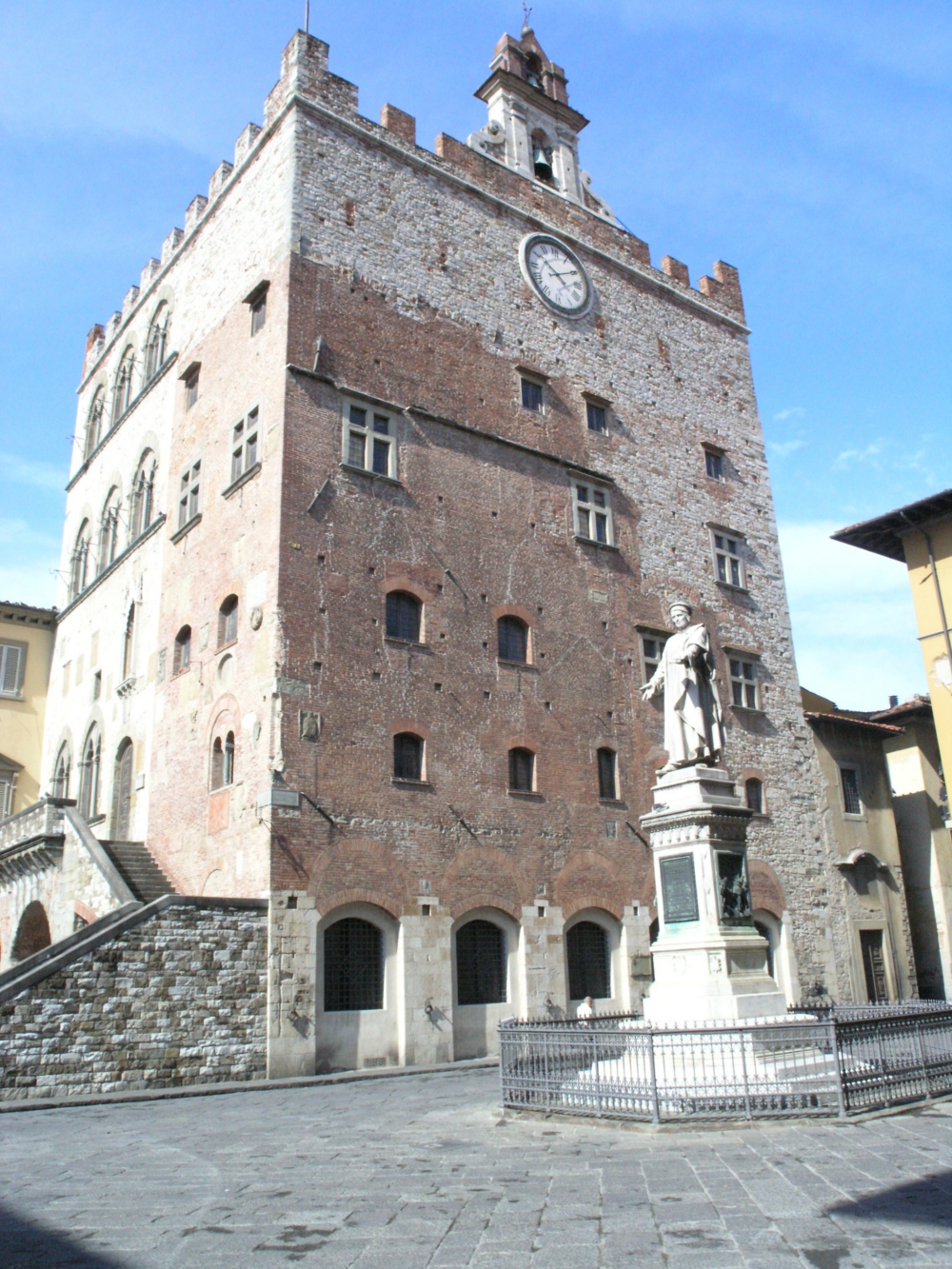
Housed inside the thirteenth-century Praetorian Palace, a symbolic building of the city's civic architecture and history, the Civic Museum preserves the pictorial collection of renowned Renaissance artists such as Filippo Lippi.
A journey through three thousand works including paintings, drawings, sculptures that is a true journey in the history of the city through its immense artistic heritage.
Emperor’s Castle
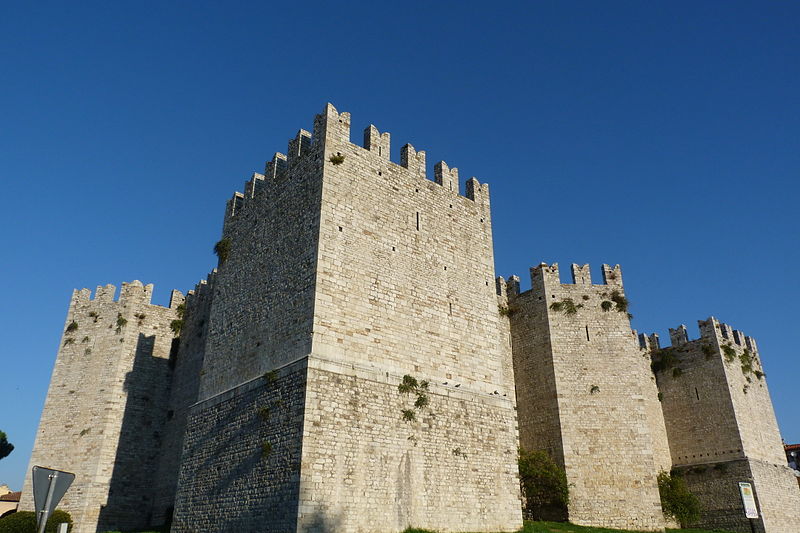
The Emperor's Castle is the only example of Swabian architecture in north-central Italy - wanted by Emperor Frederick II of Swabia - was built between 1237 and 1248 by Sicilian architect Riccardo Lentini.
The imposing complex was inhabited by the emperor's vicar, who made it his headquarters: the aim was to control the main communication routes to the Holy Roman Empire.
The entrance portal is very impressive, with dichromatic decorative elements obtained through white and green bands of marble. On the sides are carved Swabian lions, a reminder of the iconography of the imperial house.
From the castle there is a beautiful view of the city's main monuments.
Basilica of Santa Maria delle Carceri
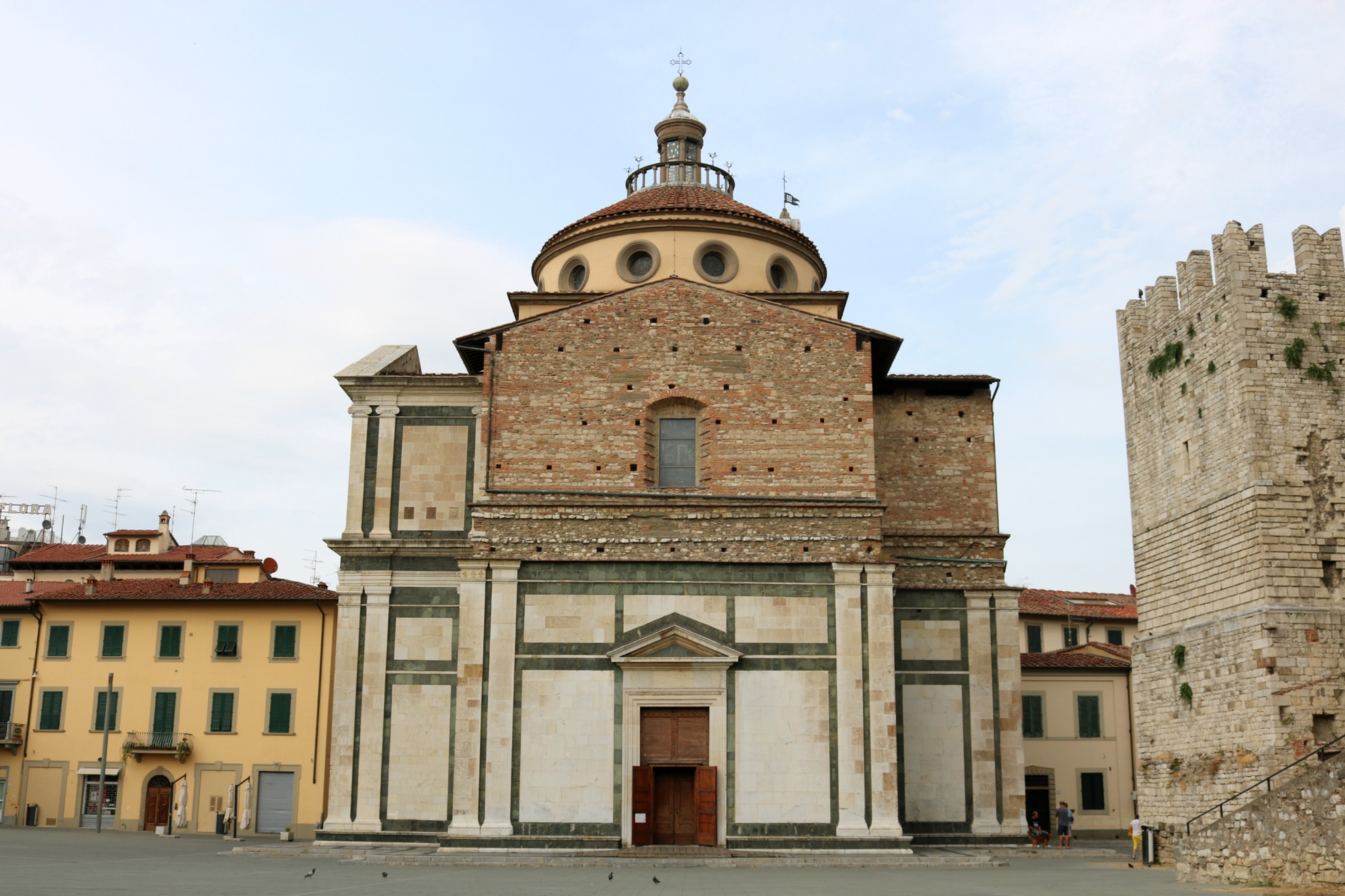
Just a stone's throw from the Emperor's Fortress is the Basilica of Santa Maria delle Carceri, the architecturally valuable church that was built in the 15th century to a design by Giuliano da Sangallo.
The plan is in the shape of a Greek cross and the building is topped by a dome while the outer facing, in white-green marble, was never completed.
The interior is decorated with a majolica frieze and tondi executed by Andrea della Robbia. The glass windows were executed to a design by Domenico Ghirlandaio.
Many works of art are housed here: the northern arm is closed by an elegant 16th-century balustrade by Buontalenti and features in the back a magnificent white marble aedicule designed by Sangallo and inspired by those in the Pantheon.
Beneath the Sacristy are the rooms of the ancient prisons.
Datini Palace
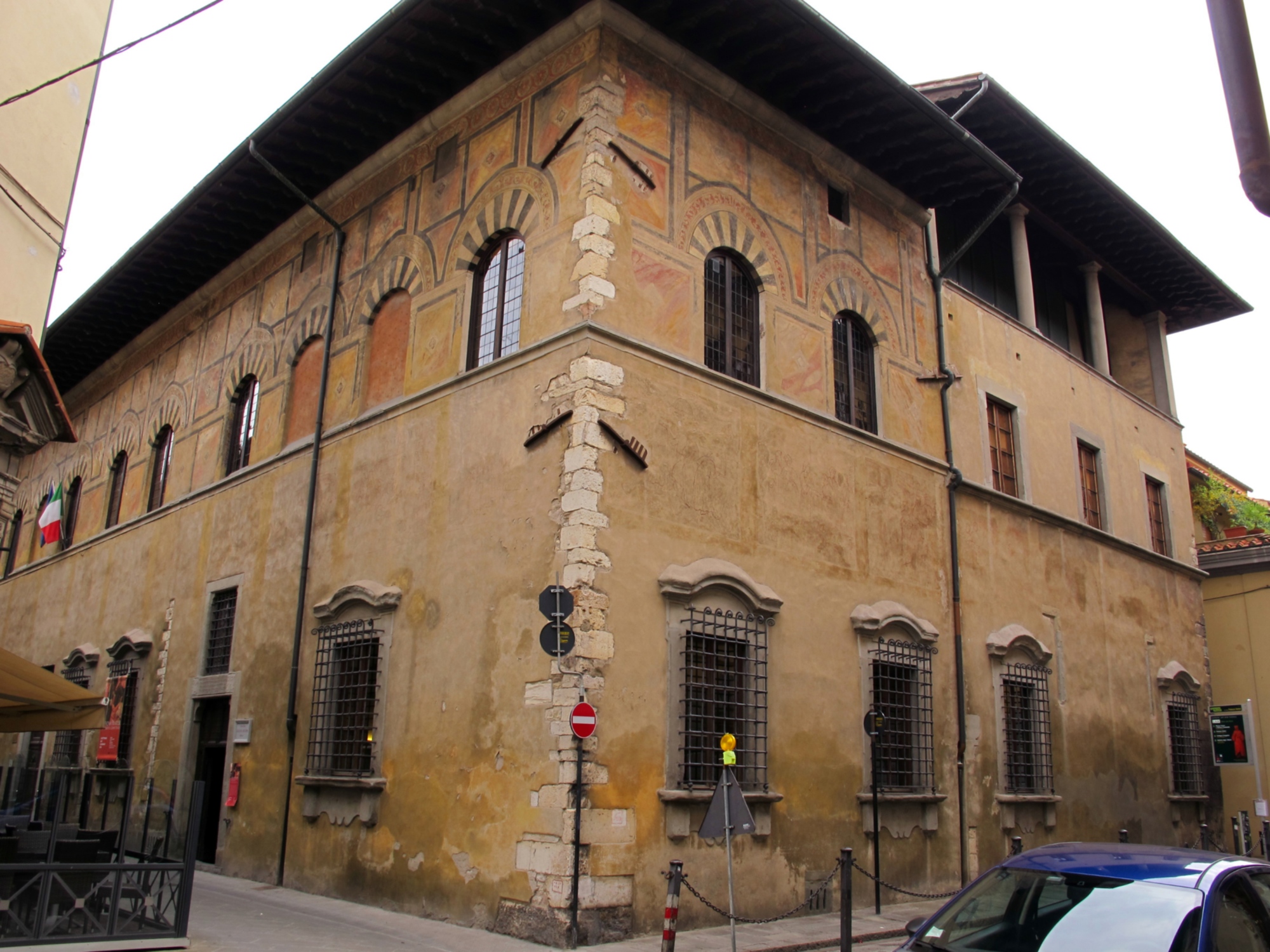
Datini Palace is the former residence of Tuscany's most illustrious merchant, Francesco Datini.
Francesco was one of the richest merchants of his time thanks to his business, which expanded from trading in arms, jewelry and spices to the main routes with the trading of wool and cloth from Prato and beyond. His company had branches in Italy and abroad, all over the Mediterranean as far as Egypt.
Today the palace is the home of the Datini Archives, the richest and most complete collection of correspondence and mercantile records in the world, a basic source of late medieval economic history.
Thousands of account books, textile samples, trade letters, private letters are kept there, so much so that it has become a real boast for the city of Prato.
Piazza Mercatale
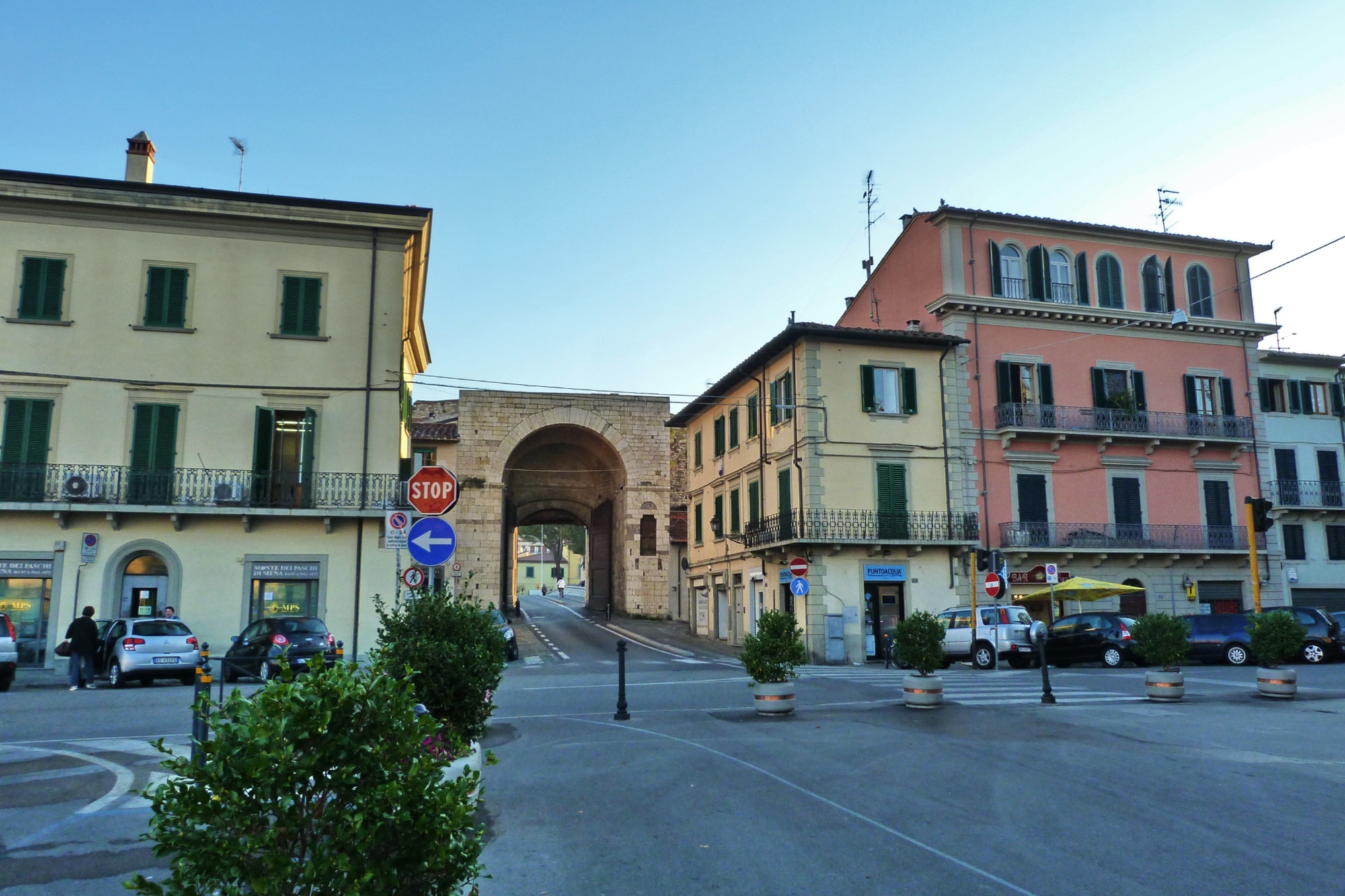
In the heart of the city, Piazza Mercatale is one of the largest medieval squares in Europe: originally the square consisted of a meadow on the Bisenzio River used since the 12th century for holding markets. It later became the site of the September fair that drew huge crowds. The walls along the river, the Mercatale Gate and the bridge over the Bisenzio delimited the space, giving it its distinctive almond shape.
The appearance of the square changed profoundly following the 1944 bombings that damaged it. Today there are few remains of the original loggias under which artisans carried out their activities, but the square is one of the city's best-loved places, and many people, especially young people, gather in the clubs that enliven it.
Luigi Pecci Center for Contemporary Art
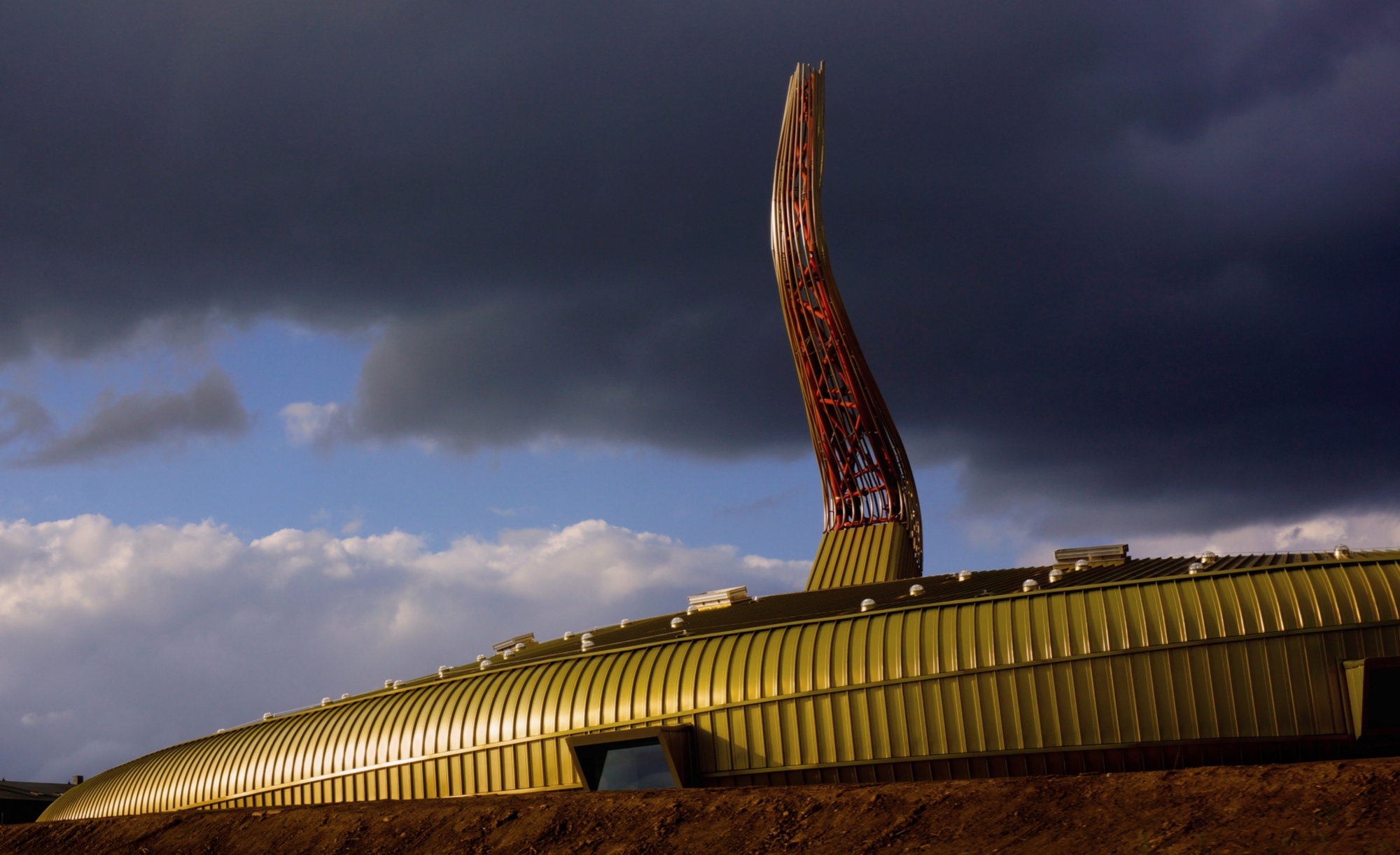
Not only art and tradition: Prato is also an avant-garde city that turns its gaze to contemporary art thanks to the Luigi Pecci Center, a large exhibition space with 1,000 works by three hundred artists.
Opened in 1988, it was the first museum in Italy built specifically to house and promote international avant-garde art.
Over the years, an important permanent collection has been built up, consisting of works by the major artists of the last three decades.
Sculptures, installations, paintings and videos made from the 1950s to the present, and many workshops to bring children and young people closer to art.
The building itself is a work of art in the city of Prato: it was originally designed by the rationalist architect Italo Gamberini and later renovated and expanded by architect Maurice Nio.
Textile Museum
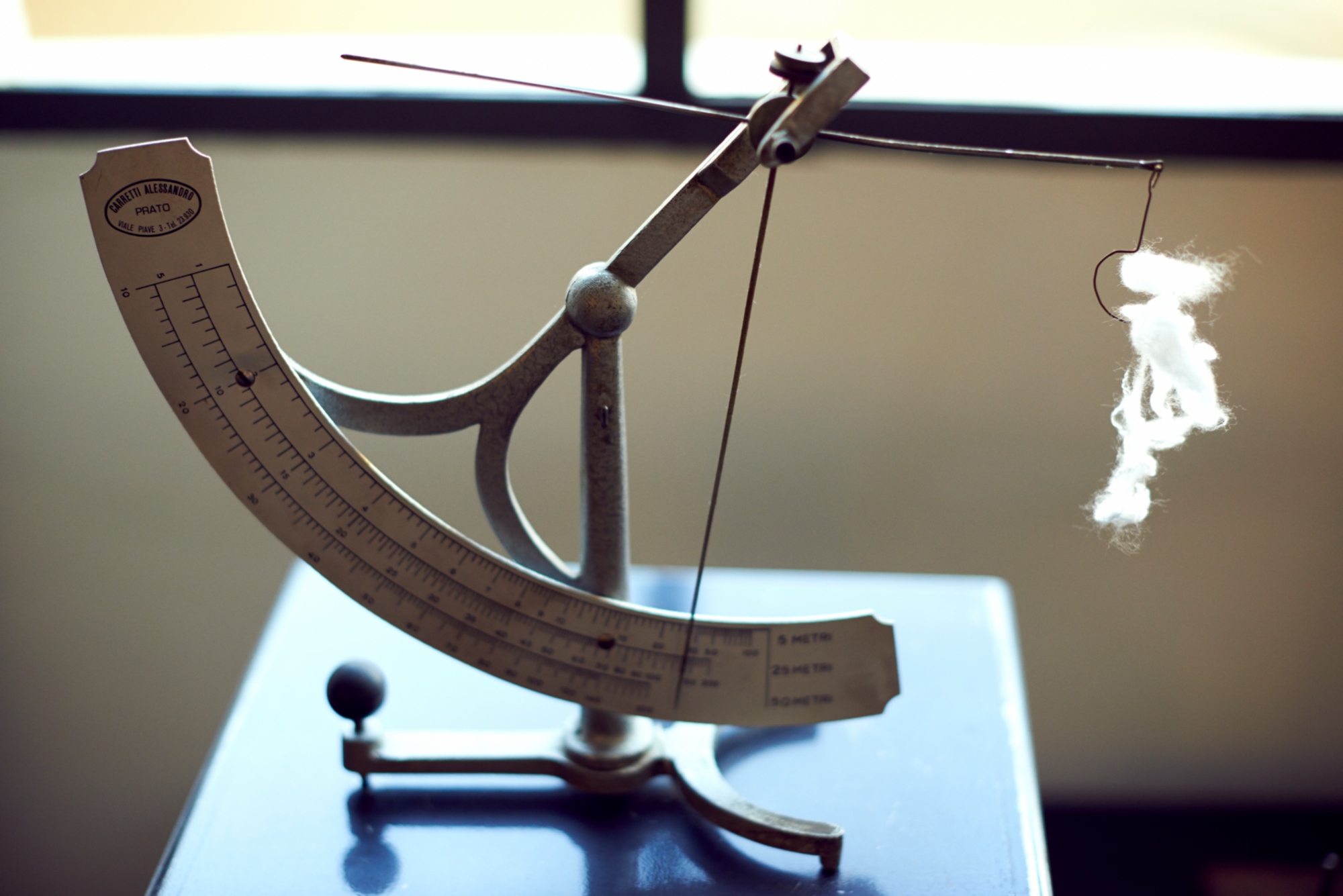
Prato is also a textile city that has always inspired fabric collections, guiding fashion and the choices of the big brands with the excellence of its productions.
Precisely for this reason, a visit to the Textile Museum is a must: inside it are preserved samples ranging from the fifth century to the present day, and the very building that houses it is a monument of industrial archaeology, as it is the only large nineteenth-century production complex still existing within the medieval walls.
The museum also organizes temporary exhibitions and installations on ancient and contemporary textiles, fashion and design.
Typical products
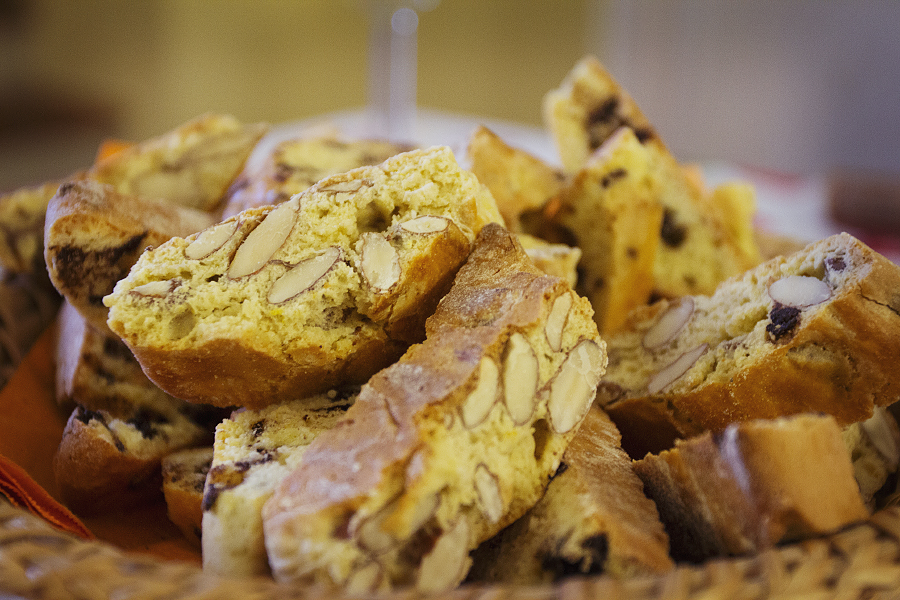
And if all this hasn't made you want to spend a few hours in this beautiful city, you just have to try and surprise yourself with Prato's delicious food and wine traditions.
Starting with the bread, which you are advised to enjoy with the very special Mortadella IGP, to exceptional wines such as Carmignano DOCG, Prato peaches and the famous cantuccini with almond, one of the symbols of Italy in the world.
What’s nearby?




